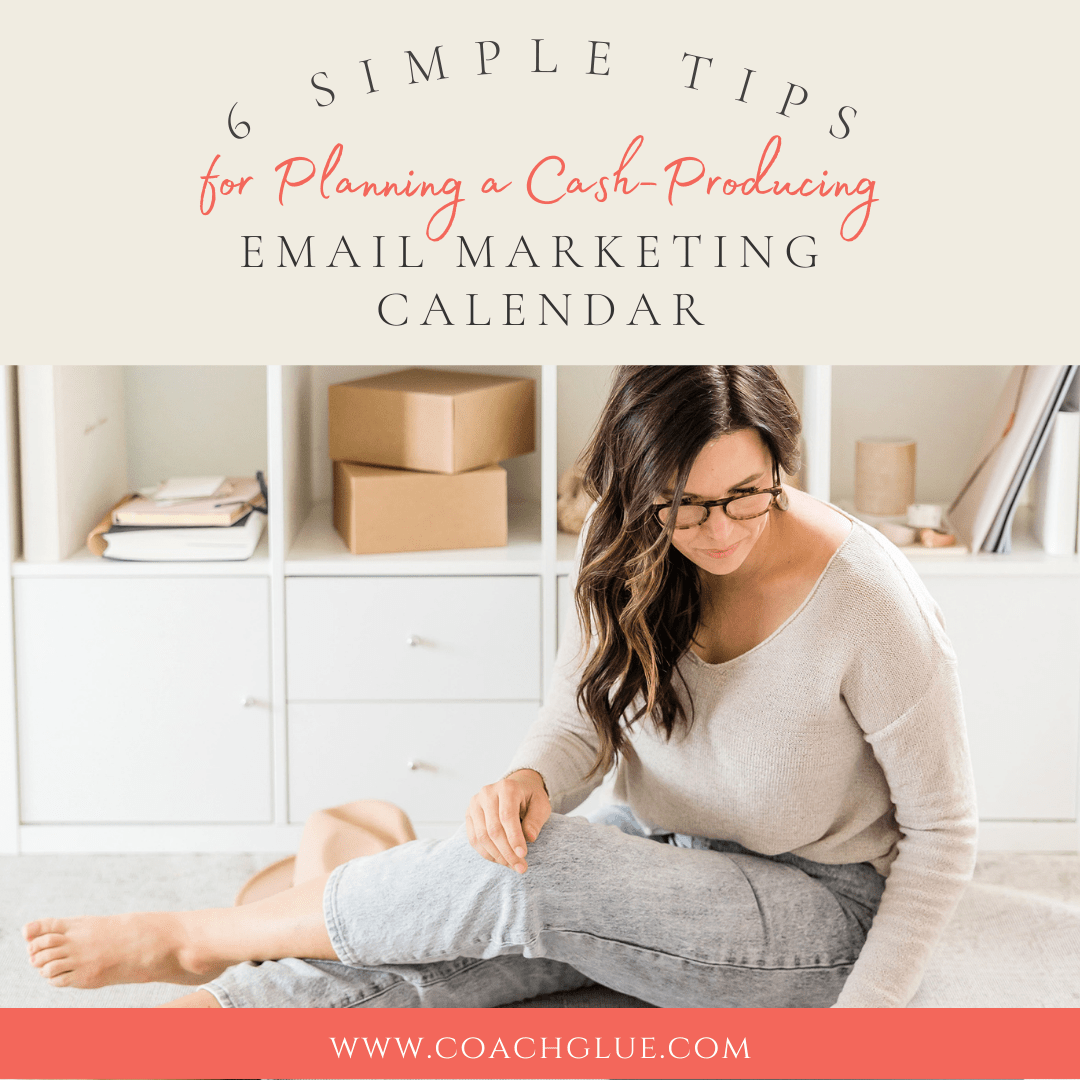Today’s online market is undoubtedly crowded–and noisy. You can (successfully) market yourself in a rainbow of ways–from any of the shiny new social media platforms to (sometimes, hefty) paid ads.
But if you’re looking to have more intimate convos with your audience, there’s truly no better place to do that than email. (And you can quote us on that!)
That said, coming up with fresh, valuable email content to send your list every week isn’t always a cakewalk.
That’s where an email marketing calendar that you prepare in advance comes in.
If you’ve ever sat back in your comfy office choice and pondered any of the following:
“What should I say to my list this week?”
“How do I balance promotional emails with emails that just give value?”
“How do I get more consistent with email in the first place?”
…you’re in the right place.
Let’s take a look at few tried-and-tested ways to create an effective email marketing calendar.
Ready to get insanely organized and craft content that both nurtures your audiences and clinches sales, every single month?
1) Look at Upcoming Promotions and Launches
An email marketing calendar should revolve around your ultimate business goals. Usually, this is making sales.
You’ll want to get clear on the month’s:
- Promotions: Think about your own special discounts or deals, as well as affiliate promotions you’re involved in or committed to
- Launches: Are you launching a new offer this month (or next)? Do you need to create a launch sequence with several emails going out between your cart open and close dates?
- Announcements: Is there anything on the horizon you’ll need to announce, like a new website, a live event or workshop you’re attending or hosting, etc.?
These questions are just a starting point. Look at your entire business over the coming month to see what’s happening and what your audience wants (or needs) to know about.
For each of these, you’ll also want to get clear on when you would need to promote them via email. Do they need to go out at a specific date and time? If so, get it in writing.
2) Map Out Next-Level ‘Nurture Content’ Ideas
While your promotions are a top priority, you’ll also need to create content ‘in between’ this promotional content in order to keep growing this intimate relationship with your audience.
You might create value-based content like:
Seasonal content: including fun and/or relevant holidays or current events
Lifestyle content: Where are you going to be that you can document or create content around–either before you go, while you’re there or after you come back–or all three? Are you headed anywhere fun–whether personal or professional–that might inspire or educate your audience in some way?
Brand-building or credibility-boosting content: This might include sharing stories from your personal life or business, sharing testimonials or posting your launch results as new people sign up for your offers, for example.
Educational content: What problems can you solve for your audience with educational content? (This is where content buckets or pillars can seriously come in handy. If you already have defined content pillars, use them as a starting point.)
New content drops. Are you releasing a new podcast (yours or someone else’s) or blog posts, for example?
Repurposed content: We’re all about keeping things simple here, so don’t reinvent the wheel if you don’t have to! If you’re releasing other free content elsewhere–like social media posts, a brand new blog post or podcast episode, for example–you can also email your list with it (or about it)
3) Don’t Forget a Scintillating Subject Line and CTA
What else will you need to include in your emails to make them super effective? Subject lines and CTAs, of course!
Subject lines are everything when it comes to email marketing – an unopened email won’t help move the needle in your business.
That said, you can (and should) brainstorm a few click-worthy subject line ideas right into your email content calendar.
You’ll also want to map out any CTAs you plan to use for each email. What action would you like your reader to take the end of your email? This might include a link, or simply replying to your email.
4) Decide ‘When to Send’ for Maximum Email Opens
The great thing about email? You get to decide when you do it. You can choose to send a daily email, a weekly newsletter, a monthly round-up–or anything in between. You can also decide to send more emails during a launch or sale, for example.
While keeping your goals for the month in mind, be sure to plan out exactly when you’re going to email. This is all information you can capture in your email marketing calendar of choice.
You can also choose what time of day you’re going to send your emails. Over time, you might gather information from your email analytics that tell you when your emails tend to get an open, and when they don’t. You can also do a quick Google search to peep the most up-to-date information on when people are most likely to be in their inboxes.
5) Segment Like a Boss
Does everyone on your email list need to receive every single email from you? Likely they don’t. One way to avoid giving your list dreaded “email fatigue” is to segment your list so people only see the emails that are most relevant to them. You can also provide your email list with the option to “opt-out” of specific promotions, but stay on your email list (so they don’t just unsubscribe and miss future offers from you!).
Logistically, this will look different depending on your email service provider. That said, most ESPs allow you to create and name ‘segments’ and then choose which segments will receive (or won’t receive) a specific email or email sequence.
For example, if someone buys your latest launch offer, you can add them to a ‘buyers’ list so they no longer see the promotion from you. Or, you can ask segmenting questions via email to send people emails specific to their current needs and desires.
6) Analyze Your Results to Guide Next Month’s Email
Creating space on your calendar (literally) to analyze your results is key for successful email marketing. Not only can you record this information in your (physical) email marketing calendar, it can also help you plan the following month’s content.
Which topics did people resonate with most? What got the most opens, responses, or click-throughs?
Never want to worry about what to email your list again–or want to scrap ‘write weekly newsletter’ from your To Do List forever?
We’ve got you. Check out the CoachGlue VIP Club and snag thousands upon thousands of dollars of done-for-you content you can take and tweak (or use as-is) to rake in more sales with less effort. Check out all the done-for-you goodness here.






